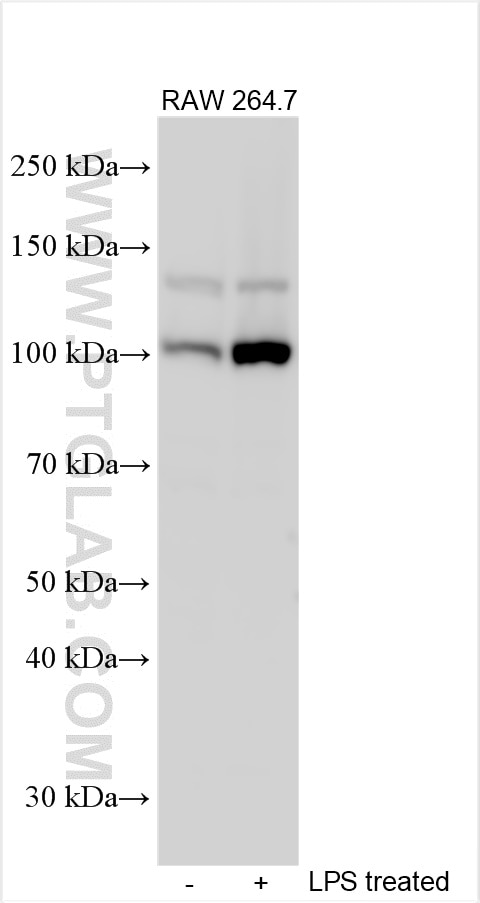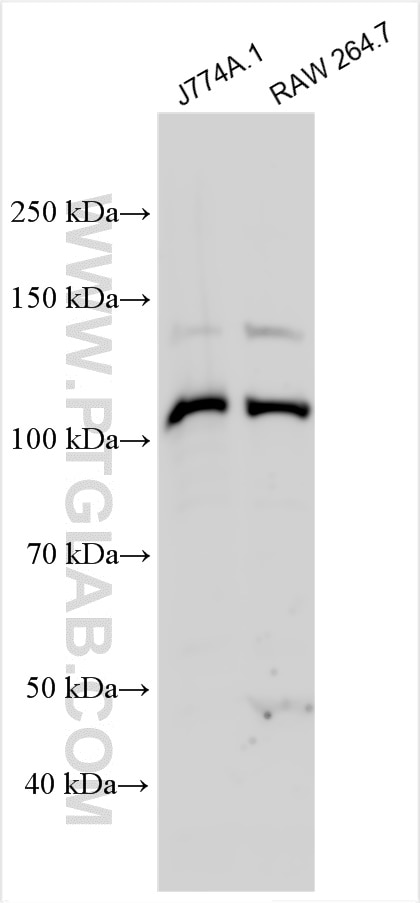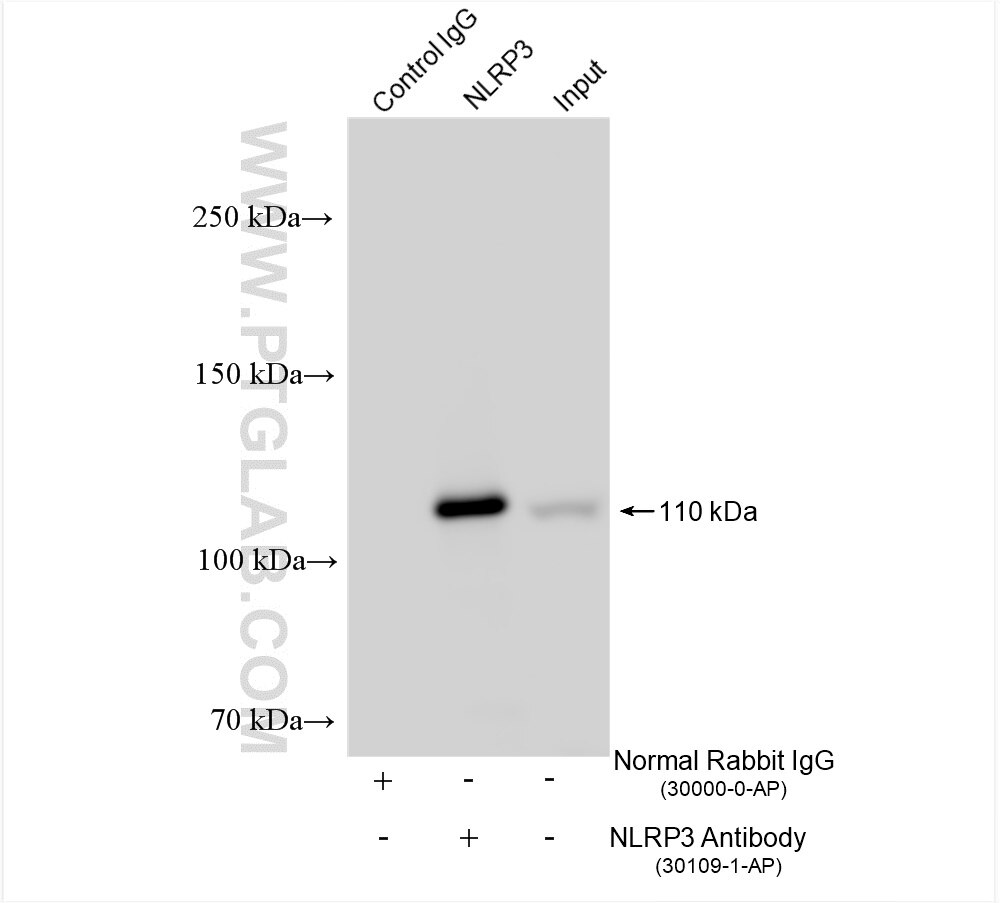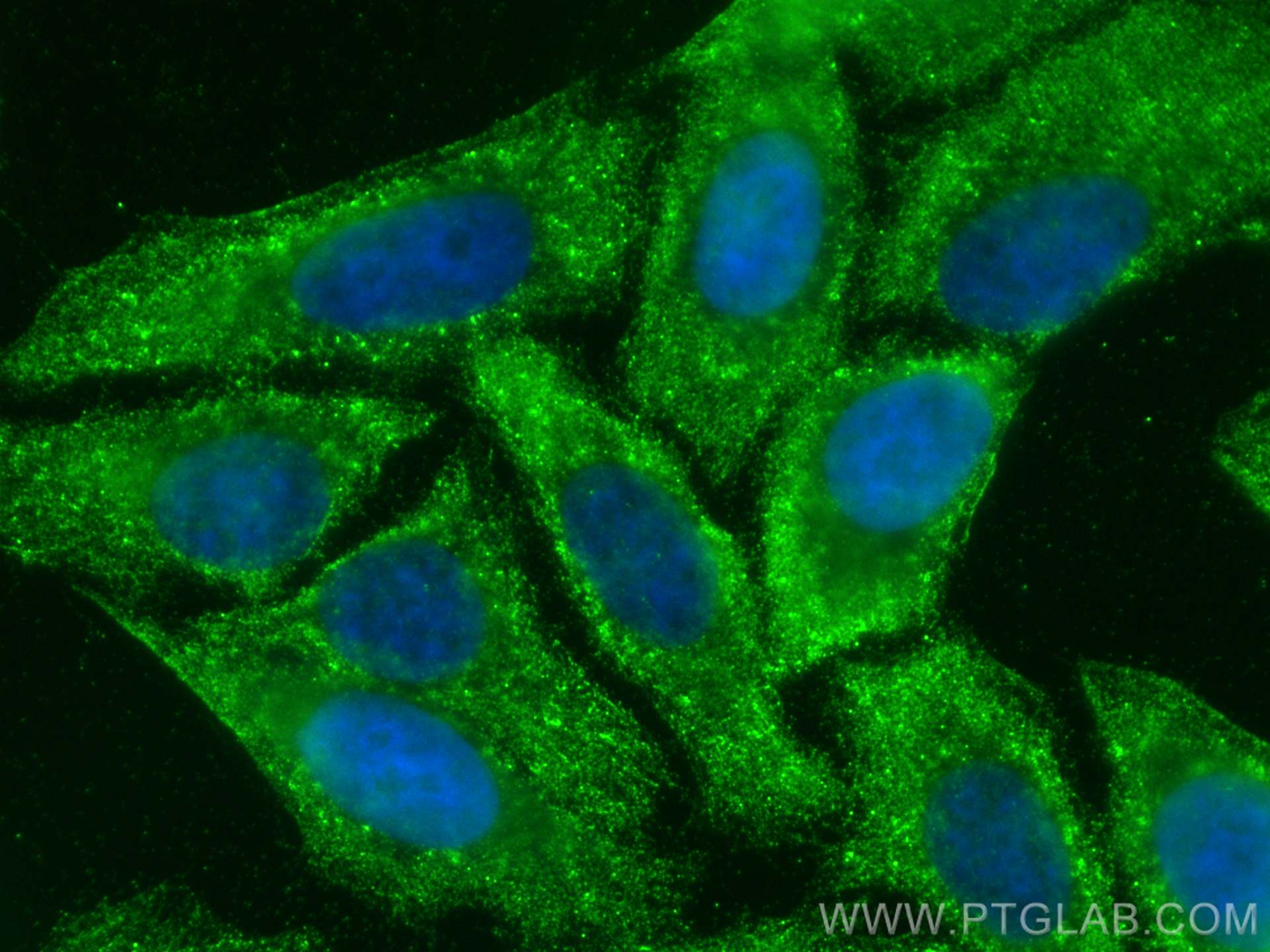Tested Applications
| Positive WB detected in | J774A.1 cells, rat spleen tissue, RAW 264.7 cells, LPS treated RAW 264.7 cells |
| Positive IP detected in | RAW 264.7 cells |
| Positive IF/ICC detected in | HepG2 cells |
Recommended dilution
| Application | Dilution |
|---|---|
| Western Blot (WB) | WB : 1:1000-1:5000 |
| Immunoprecipitation (IP) | IP : 0.5-4.0 ug for 1.0-3.0 mg of total protein lysate |
| Immunofluorescence (IF)/ICC | IF/ICC : 1:200-1:800 |
| It is recommended that this reagent should be titrated in each testing system to obtain optimal results. | |
| Sample-dependent, Check data in validation data gallery. | |
Published Applications
| WB | See 14 publications below |
| IF | See 3 publications below |
| CoIP | See 1 publications below |
Product Information
30109-1-AP targets NLRP3 in WB, IF/ICC, IP, CoIP, ELISA applications and shows reactivity with human, mouse, rat samples.
| Tested Reactivity | human, mouse, rat |
| Cited Reactivity | human, mouse, rat |
| Host / Isotype | Rabbit / IgG |
| Class | Polyclonal |
| Type | Antibody |
| Immunogen | NLRP3 fusion protein Ag32515 Predict reactive species |
| Full Name | NLR family, pyrin domain containing 3 |
| Calculated Molecular Weight | 118kd |
| Observed Molecular Weight | 108-120 kDa |
| GenBank Accession Number | NM_145827 |
| Gene Symbol | Nlrp3 |
| Gene ID (NCBI) | 216799 |
| RRID | AB_3086231 |
| Conjugate | Unconjugated |
| Form | Liquid |
| Purification Method | Antigen affinity purification |
| UNIPROT ID | Q8R4B8 |
| Storage Buffer | PBS with 0.02% sodium azide and 50% glycerol |
| Storage Conditions | Store at -20°C. Stable for one year after shipment. Aliquoting is unnecessary for -20oC storage. 20ul sizes contain 0.1% BSA. |
Background Information
NLRP3, also named as NALP3, CIASI, C1orf7, PYPAF1, Cryopyrin and MIM606416, belongs to NLR family. NLRP3, a key and eponymous component of the NLRP3 inflammasome, plays a crucial role in innate immunity and inflammation. NLRP3 inflammasome is expressed in immune cells, including monocytes, macrophages, and dendritic cells. When the NLRP3 inflammasome is activated, the PYD domain of NLRP3 mediates recruitment of an adaptor protein called ASC and the effector protein procaspase-1 to form an NLRP3 inflammasome complex that can cleave inactive procaspase-1 to from active caspase-1. And then the active caspase-1 results in secretion of interleukin (IL)-18 and IL-1β. Activation of the NLRP3 inflammasome is also required for HMGB1 secretion. Inflammasomes can also induce pyroptosis, an inflammatory form of programmed cell death (PMID:27669650). NLRP3 has some isoforms with the MW of 106-118 kDa and 75-83 kDa. An additional 130-135 kDa band could also be detected (PMID: 17164409; PMID: 34680443; PMID: 35585627). This antibody is specific for mouse NLRP3.
Protocols
| Product Specific Protocols | |
|---|---|
| WB protocol for NLRP3 antibody 30109-1-AP | Download protocol |
| IF protocol for NLRP3 antibody 30109-1-AP | Download protocol |
| IP protocol for NLRP3 antibody 30109-1-AP | Download protocol |
| Standard Protocols | |
|---|---|
| Click here to view our Standard Protocols |
Publications
| Species | Application | Title |
|---|---|---|
J Agric Food Chem Ocotillol-Type Pseudoginsenoside-F11 Alleviates Lipopolysaccharide-Induced Acute Kidney Injury through Regulation of Macrophage Function by Suppressing the NF-κB/NLRP3/IL-1β Signaling Pathway | ||
Int Immunopharmacol Triggering receptor expressed on myeloid cells-1 aggravates obliterative bronchiolitis via enhancing the proinflammatory phenotype of macrophages | ||
Int Immunopharmacol UCP2 knockout exacerbates sepsis-induced intestinal injury by promoting NLRP3-mediated pyroptosis | ||
Probiotics Antimicrob Proteins Anti-inflammatory Effects of Membrane Vesicles from Eubacterium rectale via the NLRP3 Signal Pathway | ||
J Alzheimers Dis TLR4/Rac1/NLRP3 Pathway Mediates Amyloid-β-Induced Neuroinflammation in Alzheimer's Disease | ||
Cardiovasc Drugs Ther Therapeutic Potential of Curcumin in Diabetic Cardiomyopathy: Modulation of Pyroptosis Pathways |











